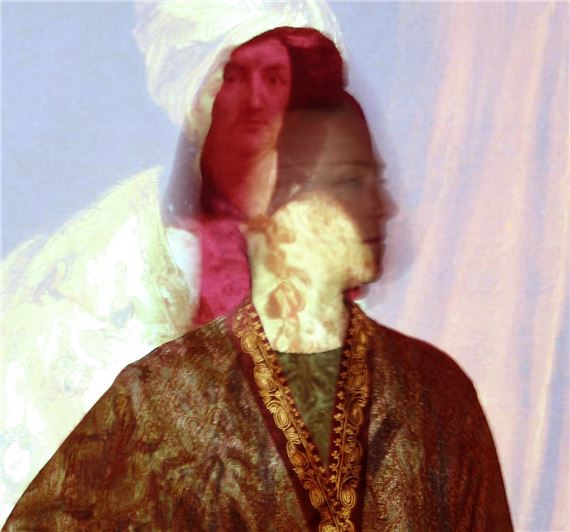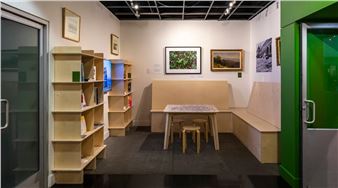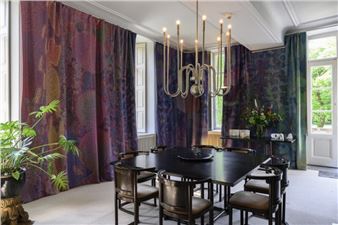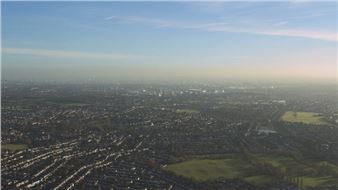Karen Babayan: Out of the Ruins
вҖңOut of the RuinsвҖқ is Karen BabayanвҖҷs compelling exhibition at Centrala, part of the Arts Council-supported year-long вҖңHybrid LandscapesвҖқ program. Exploring broad themes of displacement, hybrid identities, and cultural resilience across Eastern Europe, Babayan uses her Eastern European and Middle Eastern heritage, including her Armenian roots, to delve into the complex interplay between history, identity, and survival. This reflects the shared experiences of Eastern European communities and is portrayed through a series of engaging visual and literary works.
Karen Babayan is a multidisciplinary artist residing in the north of England. As a grandchild of Armenian genocide survivors, she is deeply motivated to raise awareness about this historical catastrophe and its ongoing impact, notably through recent events like the exodus and genocide of the Armenians of Artsakh (Nagorno-Karabakh). Through visual art and storytelling, she addresses the complexities of identity and belonging, weaving in elements of her Armenian background. Karen BabayanвҖҷs artistic career has been marked by over 15 solo exhibitions across the UK, Armenia, and Canada, including notable shows at the Tate Britain Library in London, the Museum of Modern Art in New York, and the Art Gallery of Ontario in Toronto. Her works are part of many public and private collections, showcasing her engagement with issues of dual heritage, belonging, and the nuances of Eastern and Western cultural dynamics.
The exhibition showcases a selection of BabayanвҖҷs works: early career colourful paintings and ritualised objects that draw from Eastern European religious and pagan iconography, encapsulating the regionвҖҷs vibrant cultures and tumultuous history; a photographic series on aluminium depicting landscapes marked by historical and cultural shifts; installations of found objects that symbolise rites of passage and the collective journey of Eastern European identities, including the Armenian experience; and passages from BabayanвҖҷs forthcoming novel, which enhance the narrative with personal and communal stories of displacement and endurance.

Recommended for you
вҖңOut of the RuinsвҖқ is Karen BabayanвҖҷs compelling exhibition at Centrala, part of the Arts Council-supported year-long вҖңHybrid LandscapesвҖқ program. Exploring broad themes of displacement, hybrid identities, and cultural resilience across Eastern Europe, Babayan uses her Eastern European and Middle Eastern heritage, including her Armenian roots, to delve into the complex interplay between history, identity, and survival. This reflects the shared experiences of Eastern European communities and is portrayed through a series of engaging visual and literary works.
Karen Babayan is a multidisciplinary artist residing in the north of England. As a grandchild of Armenian genocide survivors, she is deeply motivated to raise awareness about this historical catastrophe and its ongoing impact, notably through recent events like the exodus and genocide of the Armenians of Artsakh (Nagorno-Karabakh). Through visual art and storytelling, she addresses the complexities of identity and belonging, weaving in elements of her Armenian background. Karen BabayanвҖҷs artistic career has been marked by over 15 solo exhibitions across the UK, Armenia, and Canada, including notable shows at the Tate Britain Library in London, the Museum of Modern Art in New York, and the Art Gallery of Ontario in Toronto. Her works are part of many public and private collections, showcasing her engagement with issues of dual heritage, belonging, and the nuances of Eastern and Western cultural dynamics.
The exhibition showcases a selection of BabayanвҖҷs works: early career colourful paintings and ritualised objects that draw from Eastern European religious and pagan iconography, encapsulating the regionвҖҷs vibrant cultures and tumultuous history; a photographic series on aluminium depicting landscapes marked by historical and cultural shifts; installations of found objects that symbolise rites of passage and the collective journey of Eastern European identities, including the Armenian experience; and passages from BabayanвҖҷs forthcoming novel, which enhance the narrative with personal and communal stories of displacement and endurance.
Artists on show
Contact details


 ARTISTS
ARTISTS















